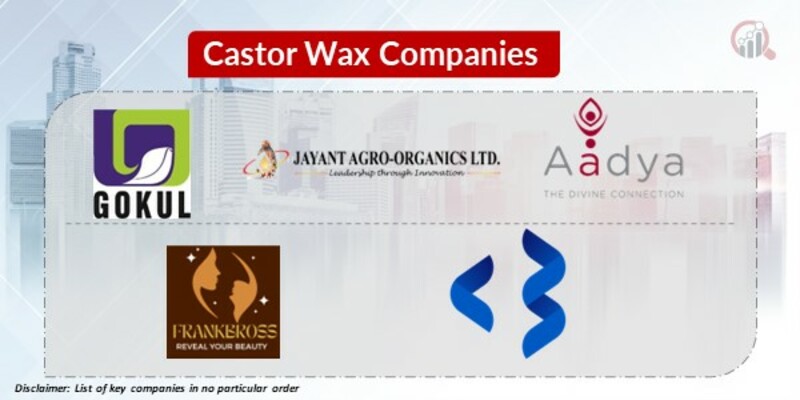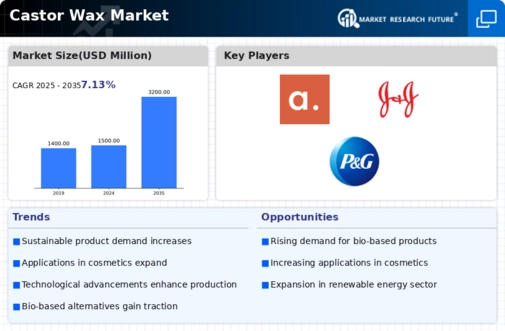Top Industry Leaders in the Castor Wax Market

Castor wax, a versatile and sustainable wax derived from castor oil, is witnessing a surge in demand, driven by its eco-friendly profile and diverse applications across industries. This burgeoning market boasts a dynamic competitive landscape, with established players and new entrants vying for a share of the pie. Let's delve into the strategies, factors influencing market share, and recent developments shaping the castor wax market:
Strategies Adopted by Market Players:
- Product Innovation: Leading players are constantly innovating, developing new castor wax grades with improved properties like higher melting points, enhanced viscosity, and better compatibility with various formulations. This caters to specific application demands and expands market reach.
- Backward Integration: Securing castor bean supplies is crucial. Players are increasingly integrating backward to control castor bean cultivation and processing, ensuring raw material availability and cost stability.
- Sustainability Focus: Highlighting the bio-based and renewable nature of castor wax is a key strategy. Companies are investing in sustainable practices throughout the castor bean-to-wax value chain, attracting environmentally conscious consumers and businesses.
- Geographic Expansion: Emerging markets like China, India, and Brazil present significant growth potential. Players are establishing production facilities and distribution networks in these regions to tap into the rising demand.
- Strategic Partnerships and Acquisitions: Collaborations with research institutions, downstream manufacturers, and distributors are fostering innovation and accelerating market penetration. Acquisitions of smaller players can also help consolidate market share.
Factors Influencing Market Share:
- Product Quality and Consistency: Consistent supply of high-quality castor wax with reliable specifications is paramount for customer loyalty. Players with robust quality control systems and reliable manufacturing processes gain an edge.
- Pricing Strategies: Balancing competitive pricing with profitability is crucial. Companies are implementing flexible pricing models and offering bulk discounts to attract new customers and retain existing ones.
- Brand Recognition and Reputation: Established brands with a strong reputation for quality and sustainability have an advantage. Building trust through marketing and customer service is key for market share expansion.
- Regional Presence and Distribution Network: Efficient distribution networks ensure timely delivery and customer satisfaction. Players with strong regional presence and logistics capabilities hold an advantage.
- Focus on Niche Applications: Catering to specific application demands in sectors like pharmaceuticals, cosmetics, and high-performance coatings can create a competitive edge.
List of Key Players in the Castor Wax Market
- GokulRefoils and solvent Limited (India)
- Hokoku Corporation (China),
- Jayant Agro-Organics Limited (India)
- Liaoyang Huaxing Chemical group corp. (China)
- Adya oils and chemicals limited (India)
- Frank B. Ross Co. Inc. (US)
- Novel (Brazil)
- BOM Brasil Oleo De Mamona Ltda. (Brazil)
Recent Developments:
August 2023: Arkema, a leading castor wax producer, expands its production capacity in France by 20% to meet the growing demand from European customers.
September 2023: Jayant Agro, an Indian castor oil and wax manufacturer, announces its entry into the North American market through a strategic partnership with a US distributor.
October 2023: A research team from MIT publishes a study demonstrating the effectiveness of castor wax as a natural barrier coating for food packaging, potentially reducing plastic waste.
November 2023: The European Chemicals Agency (ECHA) classifies castor wax as non-hazardous, further boosting its appeal for safe and sustainable applications.
December 2023: A consortium of Indian castor farmers and processors forms a cooperative to ensure fair prices and sustainable castor bean cultivation practices.

